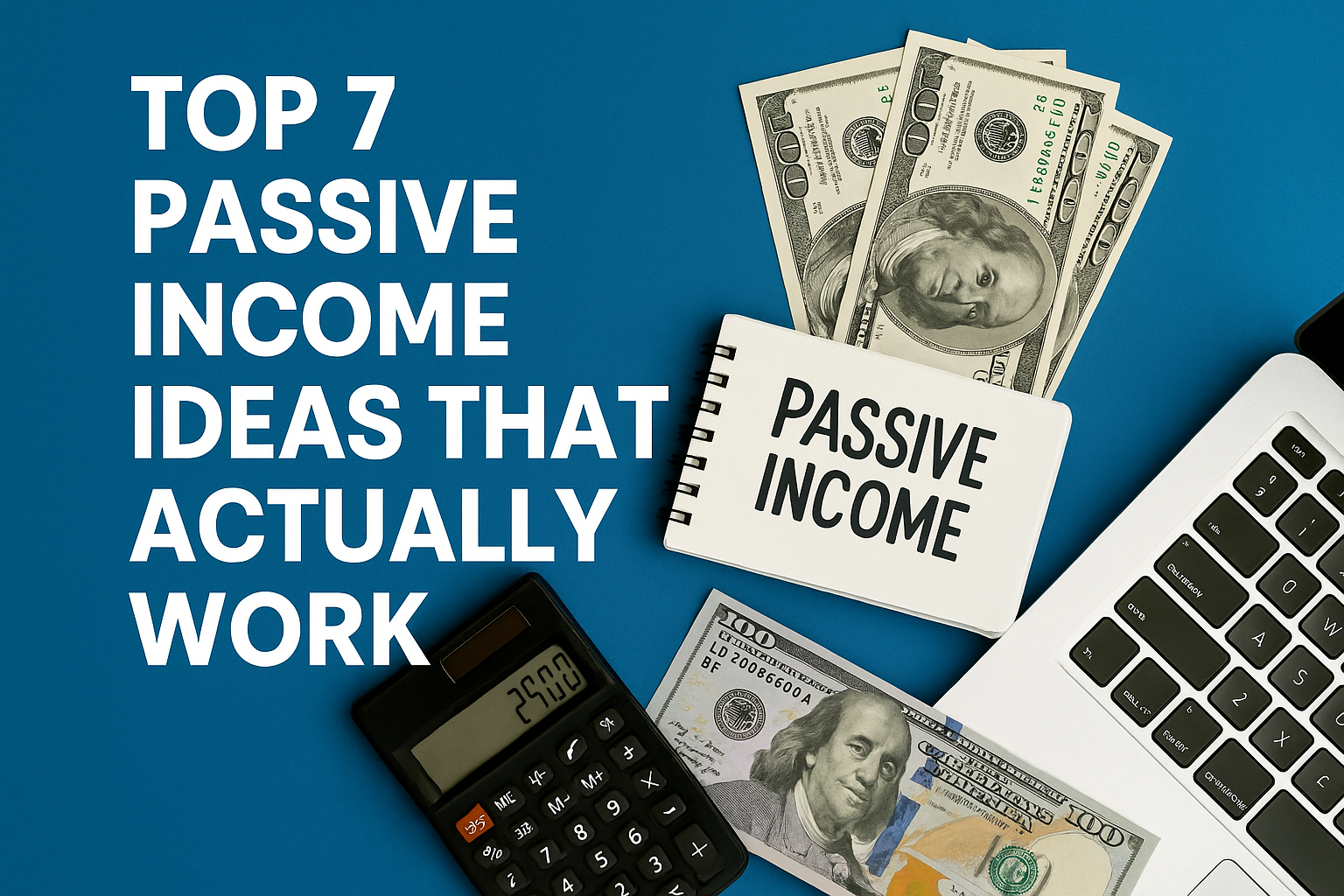
Introduction: The Truth About Passive Income
In 2025, “passive income” isn’t just a buzzword — it’s a real path toward financial independence. But while social media is flooded with fake “get-rich-quick” claims, true passive income relies on strategy, math, and patience. The goal is simple: make your money or your skills earn for you 24/7.
Here are 7 realistic passive income ideas that actually work — backed by numbers, not hype.
1. High-Yield Savings and Money Market Accounts
If you’ve got idle cash sitting in a regular bank account, you’re leaving money on the table. In 2025, many digital banks offer high-yield savings accounts with annual interest rates up to 5% or more.
A $10,000 deposit could quietly earn you $500+ a year — completely hands-off. Look for FDIC-insured online banks like Ally, SoFi, or Capital One 360 that have zero fees and automatic compounding.
2. Dividend-Paying Stocks
Investing in dividend-yielding stocks is one of the most reliable passive income strategies ever created. Companies like Coca-Cola, Johnson & Johnson, and Apple have consistently paid dividends for decades.
If you invest $20,000 into a stock that yields 4%, you’ll earn $800 annually — even if you never sell a single share. Reinvesting dividends (called DRIP) helps your income grow exponentially over time.
3. Real Estate Crowdfunding
Owning property used to require huge capital, but now you can invest in real estate projects with as little as $100 using crowdfunding platforms like Fundrise, RealtyMogul, or CrowdStreet.
These platforms pool money from investors and distribute returns based on rental income or property appreciation. Many yield between 6–10% yearly, which easily outpaces most savings accounts.
Pro tip: Choose properties with stable occupancy and clear cash-flow reports for consistent returns.
4. Creating and Selling Digital Products
Digital products — such as e-books, templates, or online courses — can generate income long after you’ve done the initial work. Once created, they can be sold repeatedly with zero extra cost.
For example, a finance blogger could release an Excel budgeting template for $10 and make $1,000 a month if 100 people buy it. Platforms like Gumroad, Etsy, or Notion Marketplaces make selling digital assets extremely simple.
5. Affiliate Marketing
Affiliate marketing is one of the most powerful income streams for bloggers, YouTubers, and creators. By promoting financial tools, apps, or products you already use, you can earn commissions when readers sign up or purchase.
Finance niches — like credit cards, insurance, and investment platforms — often pay $50–$300 per referral, making them ideal for high-RPM AdSense websites.
Consistency, trust, and clear disclosure are key to long-term success here.
6. Rent Out What You Already Own
Passive income doesn’t always require investment — sometimes it’s about maximizing what you already have.
-
Rent out a spare room or property on Airbnb.
-
List unused tools or camera gear on Fat Llama.
-
Lease your car through Turo or HyreCar.
You can turn underused assets into a recurring income stream without heavy risk or technical knowledge.
7. Automated Investing (Robo-Advisors)
If you don’t want to manage stocks manually, let a robo-advisor do the heavy lifting. Platforms like Betterment, Wealthfront, or SoFi Invest automatically balance your portfolio and reinvest dividends for you.
You can start with as little as $50 and earn 5–8% annual returns over the long term. It’s a “set it and forget it” system — the definition of real passive income.
Final Thoughts: Focus on Real Math, Not Hype
Building passive income takes planning, not luck. The formula is clear — invest in assets that appreciate, automate reinvestment, and avoid emotional spending.
Even small streams, like $100 a month from an affiliate link or $500 in dividends, can grow into thousands over time through compounding.
The key? Start now, stay consistent, and let math — not motivation — do the work.